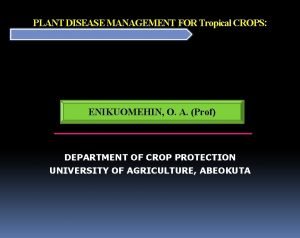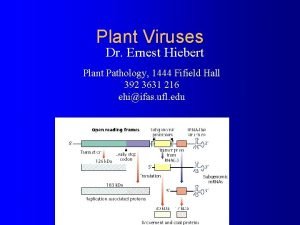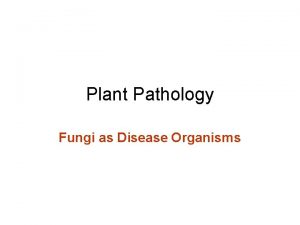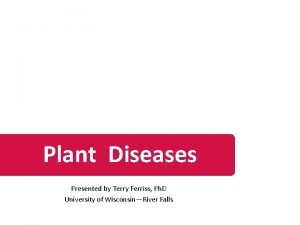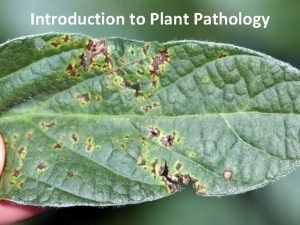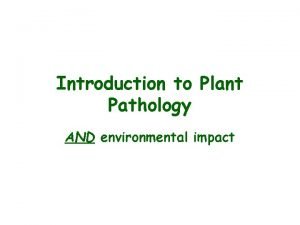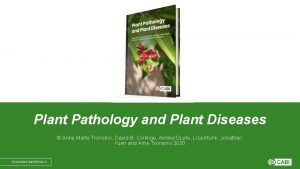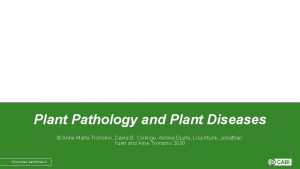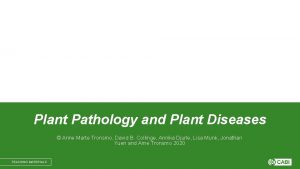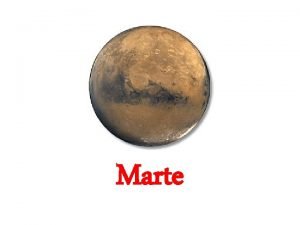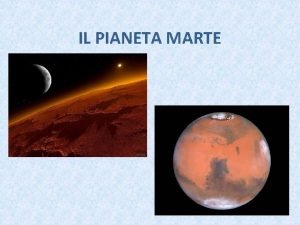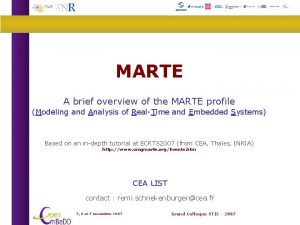Plant Pathology and Plant Diseases Anne Marte Tronsmo











- Slides: 11

Plant Pathology and Plant Diseases © Anne Marte Tronsmo, David B. Collinge, Annika Djurle, Lisa Munk, Jonathan Yuen and Arne Tronsmo 2020 TEACHING MATERIALS

Fig. 17. 1 Screening procedure conducted in soil. The potential antagonists are introduced in soil at sowing time in a mixture with the pathogen F. oxysporum f. sp. lini. (© C. Alabouvette. ) TEACHING MATERIALS Plant Pathology and Plant Diseases © Anne Marte Tronsmo, David B. Collinge, Annika Djurle, Lisa Munk, Jonathan Yuen and Arne Tronsmo 2020

Fig. 17. 2 Four mechanisms for pathogen control by endophytes. (© Latz, et al (2018) Plant Ecology & Diversity 11, 555– 567) TEACHING MATERIALS Plant Pathology and Plant Diseases © Anne Marte Tronsmo, David B. Collinge, Annika Djurle, Lisa Munk, Jonathan Yuen and Arne Tronsmo 2020

Fig. 17. 3 Antibiosis by Pseudomonas sp. versus Pythium ultimum. One strain of Pseudomonas inhibits the growth of Pythium, the other has no effect, the pathogen grows over the bacteria. (© C. Alabouvette. ) TEACHING MATERIALS Plant Pathology and Plant Diseases © Anne Marte Tronsmo, David B. Collinge, Annika Djurle, Lisa Munk, Jonathan Yuen and Arne Tronsmo 2020

Fig. 17. 4 A Hyperparasitism. (A) Thin hyphae of Trichodrerma, coiling around and penetrating into large hyphae of Rhizoctonia solani. (© C. Alabouvette) TEACHING MATERIALS Plant Pathology and Plant Diseases © Anne Marte Tronsmo, David B. Collinge, Annika Djurle, Lisa Munk, Jonathan Yuen and Arne Tronsmo 2020

Fig. 17. 4 B Hyperparasitism. (B) Powdery mildew (Sphaerotheca fuliginea) on cucumber. Leaf to the left treated with the biocontrol fungus Tilletiopsis minor, leaf to the right untreated control. (© J. S. Hansen. ) TEACHING MATERIALS Plant Pathology and Plant Diseases © Anne Marte Tronsmo, David B. Collinge, Annika Djurle, Lisa Munk, Jonathan Yuen and Arne Tronsmo 2020

Fig. 17. 4 C Hyperparasitism. (C) Scanning micrograph of the cucumber leaf. T. minor is parasitizing the cucumber powdery mildew hyphae and conidiophore. (© J. S. Hansen. ) TEACHING MATERIALS Plant Pathology and Plant Diseases © Anne Marte Tronsmo, David B. Collinge, Annika Djurle, Lisa Munk, Jonathan Yuen and Arne Tronsmo 2020

Fig. 17. 5 The effect of priming: Chitinase 3 is overexpressed in tomato root first inoculated with Fo 47 then by the pathogenic strain. (© C. Alabouvette. ) TEACHING MATERIALS Plant Pathology and Plant Diseases © Anne Marte Tronsmo, David B. Collinge, Annika Djurle, Lisa Munk, Jonathan Yuen and Arne Tronsmo 2020

Fig. 17. 6 The effect on growth of noninoculated control plants (NI) and plants inoculated by two different strains (L and B) and the mixture of the two strains. Using two strains was not beneficial. (© C. Alabouvette. ) TEACHING MATERIALS Plant Pathology and Plant Diseases © Anne Marte Tronsmo, David B. Collinge, Annika Djurle, Lisa Munk, Jonathan Yuen and Arne Tronsmo 2020

Fig. 17. 7 Role of the soil microflora in the mechanisms of fusarium wilt suppressive soil. % of wilted plants in suppressive soil (SS), steamed SS with a strain of nonpathogenic F. oxysporum, (steamed +Fo), a consortium of bacteria and fungi isolated from the SS (steamed SS+Mic), and the consortium of microorganisms + the strain of F. oxysporum (steamed SS+Mic+Fo). (© C. Alabouvette. ) TEACHING MATERIALS Plant Pathology and Plant Diseases © Anne Marte Tronsmo, David B. Collinge, Annika Djurle, Lisa Munk, Jonathan Yuen and Arne Tronsmo 2020

Fig. 17. 8 Hyperparasitism. (A) Green Trichoderma sp. sporulating after infecting the black sclerotia of Sclerotinia sclerotiorum. (B) A fluorescent micrograph of colonization of Sclerotium rolfsii sclerotia by GFP transformed Trichoderma virens I 10 3. 4. 10 GFP A. (A: © Daohong Jiang; B: © Sabrina Sarrocco. ) TEACHING MATERIALS Plant Pathology and Plant Diseases © Anne Marte Tronsmo, David B. Collinge, Annika Djurle, Lisa Munk, Jonathan Yuen and Arne Tronsmo 2020



